Ardour4 初学者教程 05 导出会话
导出一个会话
There are a number of ways to save Sessions in Ardour, so that each Session can be use later on. The simplest way is to save the entire Session just like you would save other documents: hitting “Control” + “S”.
A new Session is first saved at the moment you create it. While you are working on it, you should save it frequently. Get into the habit of hitting “Control” + “S” (or “Command” + “S” on a Mac) every few minutes.
TIP: Avoid using any characters other than letters and numbers when naming your session. Avoid white spaces, accented letters, !@#$%*()+, periods, commas, etc. Use dashes or underscores if you like. For example, instead of “My Great Session!”, prefer “My_Great_Session”, or “MyGreatSession”, or “my-great-session”. Instead of “Açaí”, write “Acai” (without accented letters), etc. Once you have created your Ardour session, do not manually rename any folders or files that belong to the Session.
Ardour File and Folder Format
The contents of a typical Session’s folder on your hard drive might look something like this:
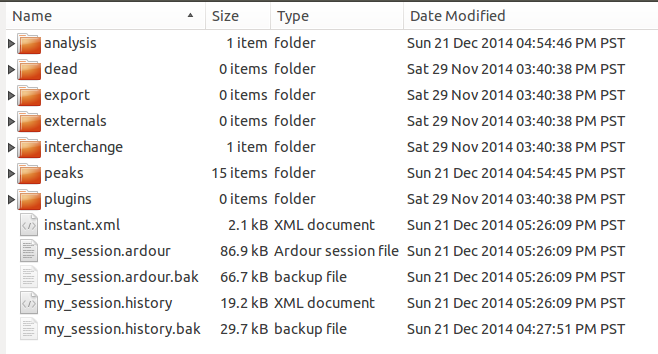
A bit of information about some of the components inside that folder:
The name of this Session is “my_session”. The main session file is called “my_session.ardour”. The Session file is periodically backed up by Ardour with a .bak extension. The .history file keeps a record of changes you have made during your Session, and is also periodically backed up. The interchange folder contains the actual audio data of all the Regions used in your Session. The export folder is where exported files are saved by default.
TIP: If double-clicking on the session file does not launch Ardour, use the standard method of first opening the application itself, then choosing a session from the Session Setup dialog.
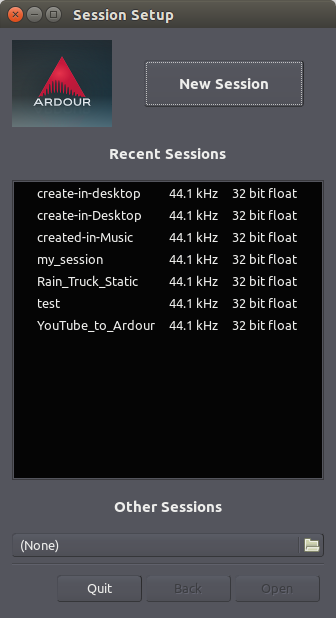
Moving a session to another computer or disk
If you need to move your Ardour session to another computer, or if you would like to make a backup of it on an external drive, you must copy the entire folder containing all of the files mentioned above. It is not enough to copy just the *.ardour file.
TIP: When copying an Ardour folder to another computer or drive, do not manually change its name or the name of any of the internal files.
导出片段
Saving a Snapshot in Ardour is similar to saving your Session to a new file, however using a Snapshot avoids overwriting the original Session file. A Snapshot contains the current state of your work, while sharing all the audio and data files of the Session.
Saving a Snapshot
You can save a Snapshot via the menu: Session > Snapshot (shortcut “Control” + “Shift” + “S”).
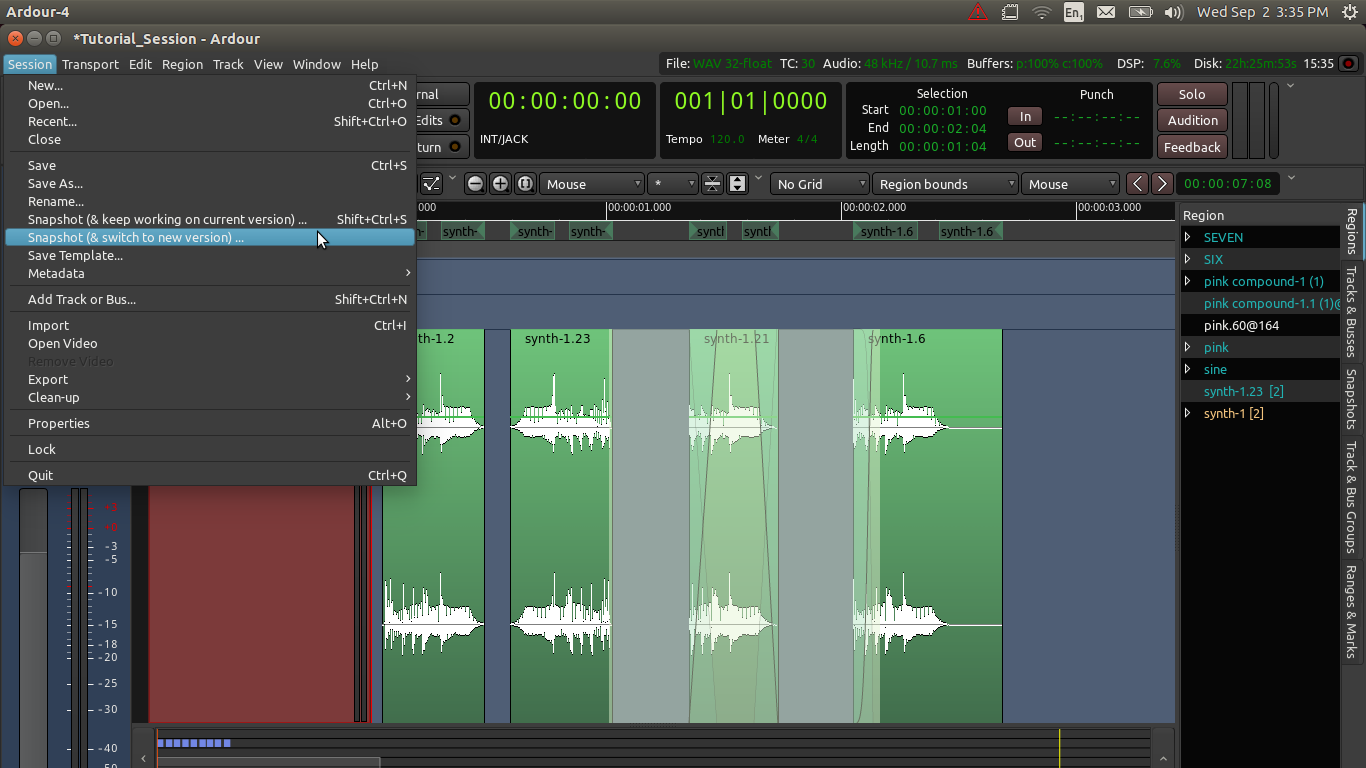
By default the program will name the new Snapshot according to the current date and timestamp of your system. If you wish, you can change the name to one that more meaningfully corresponds to the Session you are working on. From the menu, you can also choose whether to save a snapshot and keep working on the present version, or save a snapshot and switch immediately to that snapshot.
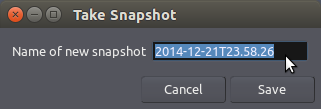
Recalling Snapshots
You can recall a saved Snapshot via the ‘Snapshots’ tab in the area on the right:
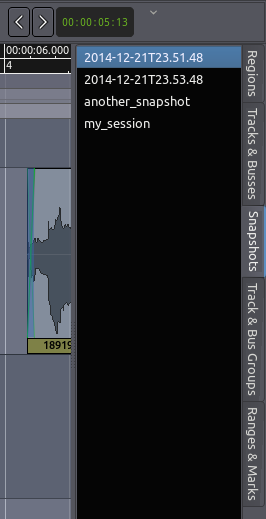
There you see a few Snapshots that we created, and the ‘my_session’ entry represents the original state of our session.
Click on any Snapshot from the list to reload it.
导出一个范围
If you often go through the motions of setting up the same information in each new Session you create, such as the number of input and output Channels, the number and names of Tracks or Busses, or the Routing, then you may wish to create a Template of that information instead.
With a Template, you can save the state of a currently open Session without all the Region information files. Templates are useful if, for example, you’re doing extensive Routing on Tracks and Buses and want to save the Editor Window’s state for use in other Sessions. An example might be a Template to record Tracks of drums, bass, guitar and vocals, each with their own input on the soundcard, which you might use as a basis for each Session you created in that situation.
Save a Template
You can save a new Template from the Main Menu: Session > Save Template. You are asked to give the new Template a name:
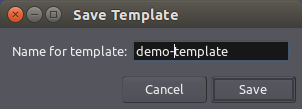
Load a Template
When creating a new Session, you get can now load up a previously saved Template:
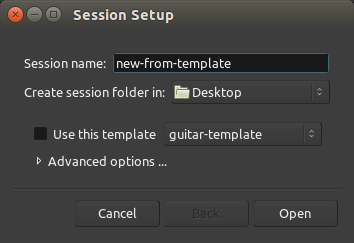
In summary: Session Templates are a way to store the setup of a session for future use. They do not store any audio data but can store:
The number of tracks and busses, along with their names. The plugins present on each track or bus (if any). All I/O connections.
Conclusion
Congratulations, you have reached the end of this introduction to Ardour! We hope that this tutorial has been useful for you to learn the key functions of Ardour.
In the following section, the Appendices, we have included some extra information we thought would be useful to new users of Ardour, including how to get Further Help, a Glossary of technical terms used in this manual, some Links to further information about Ardour on the Internet and, last but not least, the Credits of those involved in creating this Free/Libre Open Source Software (FLOSS) Manual.
Thanks for reading, and if you have some knowledge about Ardour that is not included here, please feel free to propose changes (more info on how to do it: How to Contribute. Also, this manual itself is fully open source and lives at https://github.com/brunoruviaro/ardour4-tutorial. You can even fork it and create your own customized version of it!